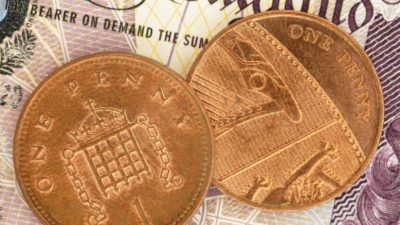Many investors, including myself, dream of being able to retire early. I think it is possible to do just that with a £1m pension pot. The strategy I am using to meet this goal is relatively straightforward. It is based on the principle of using stocks and shares to grow my wealth.
This strategy does come with its own risks. Stock markets can be volatile. There is no guarantee I will achieve the returns required to build a £1m nest egg. Even if I hit this target, there is also no guarantee the market will remain at those levels. It could fall 20% just before I decided to retire early. This would have a significant impact on my retirement plans.
Despite these risks, I am confident the strategy outlined below can help me hit this target.
A strategy to retire early
The first part of my strategy is relatively simple. I want to make the most of all the tax benefits available for pension savers. I also want to take advantage of tax-free accounts such as a Stocks and Shares ISA to maximise my overall returns without worrying about the additional complications of tax liabilities.
I can save up to £20,000 a year in a Stocks and Shares ISA. Any income or capital gains earned on investments held inside one of these wrappers is not liable for tax. There are also no restrictions on withdrawals, unlike Self-Invested Personal Pensions (SIPPs).
I can deposit £40,000 a year in a SIPP without any tax penalties. On top of this, the government will add 20% for basic rate taxpayers. Once again, any income or capital gains earned on investments held inside one of these wrappers is not liable for tax.
The one big issue with using SIPPs is that they come with age limits. I can only access this cash after 55, which means I will be able to retire before the state pension age of 66 (there are plans to increase this in the coming years). Any cash withdrawn before I reach the required age will be liable for penalties.
LISA benefits
Another investment account I can use to increase my chances of being able to retire early is a Lifetime ISA (LISA). These products are like ISAs, but I can only deposit £4,000 a year. The government will add 25% onto the balance up to a maximum of £1,000.
Like SIPPs, there are limits on withdrawals for these products. I can only use the cash to purchase a first home, or at retirement. Once again, there are penalties for withdrawing money for other reasons.
Despite the drawbacks of some of these products, they still offer substantial tax benefits. I am using a Stocks and Shares ISA and SIPP for my portfolio in order to retire early. I think these products are perfect for my needs and provide a good combination of flexibility and tax benefits.
Saving for the future
With a Stocks and Shares ISA and SIPP, I can put away a maximum of £60,000 a year. I have developed a strategy to help me get as much out of this allocation as possible. My savings goal is to put away £3,000 a month across both of these products. That works out at £36,000 a year.
It will be challenging for me to hit this target, but I believe it is possible if I am committed to hitting my £1m target to retire early. Of course, there will always be a chance that I will miss my monthly savings target.
That is why I have set the figure so high in the first place. I may miss the target some months, but it should be possible in others. Overall, I should be able to accrue a substantial nest egg using savings alone over the next couple of decades.
I will also receive tax benefits by using a SIPP to save. I have left the tax benefits out of this example because they will vary from month to month. They may also increase and decrease depending on employer pension contributions, which I have almost no control over every month. At this point, it is easier for me to overlook these numbers and concentrate on my personal savings target.
Investing for growth
I am investing my savings to earn the best return possible on this money. As I noted at the beginning of this article, I am using stocks and shares to try and grow my wealth. Over the past couple of decades, the FTSE All-Share has produced a total annual return for investors in the region of 8%. Some investment funds have produced a much higher return, such as those concentrating on finding high-growth equities.
A great example is the Scottish Mortgage Investment Trust. Trusts and funds can produce higher returns, but past performance should never be used as a guide to future potential. There will always be a chance the managers will pick the wrong stocks, which could cause losses. I would buy this investment trust as a growth stock for my portfolio, despite this risk.
A way to get around this strategy is to use passive investment funds. I own both a passive FTSE All-Share tracker and S&P 500 tracker. I think this provides the best blend of international and domestic exposure.
Retire early with stocks
As the FTSE All-Share has returned 8% per annum over the past couple of decades, I believe that I can increase my returns to around 10% per annum by building exposure to other regions and growth stocks.
At this rate of return, and assuming I can continue to invest £3,000 a month, I believe I can hit my £1m target within 14 years. If I can only save £1,500 a month, I estimate it will take nearly 20 years to hit this target. And if I can only put away £1,000, it will take 25 years.
These are just rough projections. There is no guarantee I will be able to hit these targets. Neither is there any guarantee the market will produce positive returns going forward.
Still, I think I can retire early using the strategy outlined above.






